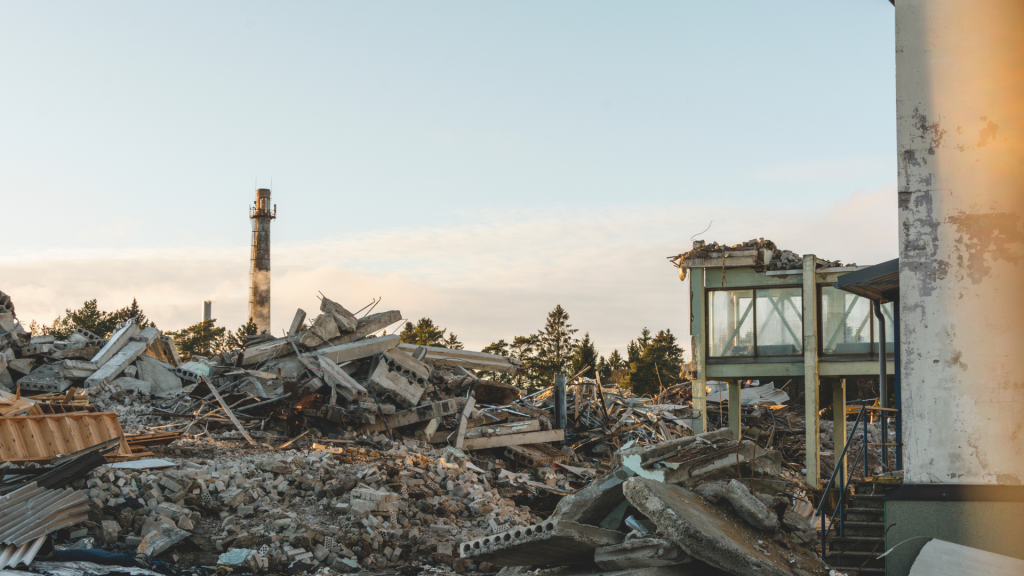The news has been filled with stories about the horrific series of tornados that ravaged the central part of the United States on December 10 and 11. It has filled the conversations of many people that I know. Living in the Chicago area and only being a few hundred miles from the paths of these tornados, it is logical that my friends and acquaintances should be concerned about the presence of such a natural catastrophe so close to where they live. And, although scientists are not able to say with certainty that these tornados, in particular, are a manifestation of climate change, we can definitely be sure that similar natural catastrophes are going to appear, and we will be able to connect many of them to climate change.
But while, on the one hand, these tornados are creating a lot of fear and consternation in those people who are simply the distant observers to these incredibly damaging phenomena, they are also, inadvertently, performing some positive services for the distant observers as well. The emotional shock value of these tornados acts as a vehicle for pulling the observers temporarily out of their experiential vacuum, out of their numbness and into a greater sensory connection with the external world.
It is as if there are two trajectories of happenings running side by side. One is the increasing transformation of our living environments in such a way that we experience much of them as being very frictionless and very mediated. So much so that metaphorically speaking we slide right off of them and float off in an experiential vacuum. The other trajectory is the growth of tension-pocket natural catastrophes that are so shocking that they threaten not only our living environment, but also our physical wellbeing and our psychological wellbeing as well. And yet, taken together, there is a sense that these two trajectories, to a certain extent, balance each other off. We start to need the natural catastrophes as a way of pulling us out of the terrible numbness generated by our modern technological living environments. And, by the same token, we need the experiential vacuum created by our modern technological living environments as a way of steeling ourselves against the terrible shocking effects of the growing strength and number of natural catastrophes in today’s world. And so, we bounce back and forth between the understimulation of the modern technological living environments and the overstimulation of the natural catastrophes to try to create an averaging of experiences that leads to a level of stimulation that approximates the level of stimulation we would receive most of the time from more traditional natural living environments. In other words, the two extreme experiences are blended in our minds to try and create a level of stimulation that we are more capable of absorbing. It is as if these two extreme experiences form an inseparable system of experiences to help people survive the growing loss of non-catastrophic organic stimulation.
And yet the creation of this surrogate system of experiences and stimulation is surely no real solution to the loss of non-catastrophic organic stimulation in our living environments. For sure, ideally, we should be able to live in an environment where we aren’t constantly experiencing the extreme weather events that are beginning to occur on a more regular basis as a result of climate change. There is an ongoing shock to us both physically and psychologically as a result of these extreme weather events. The physical effects are obvious with all the injuries and property damage that result. The psychological effects are all related to a kind of post-traumatic stress syndrome caused by events in nature rather than by other humans.
At the same time, our frictionless mediated living environments create a level of numbness that has equally negative consequences for us. In many previous articles, I have discussed the pathological behaviors and states of mind that result from this condition. Everything from depression and anxiety to addiction to suicidal behavior to mass violence.
When combined together, it is not as if the effects of natural catastrophes and experiential vacuums do end up neutralizing each other. Rather, they reinforce each other in their systems of stimulation with one another. So, pathological states of mind and behavior can be amplified as a result of this experiential combination. And it is all because the human nervous system is simply not built to absorb either the understimulation or the overstimulation that is being presented to people on a daily basis in their modern technological living environments and in extreme weather events.
So, what is it that can be done to help people to survive this experiential mess? Obviously, given that natural catastrophes (shall we include pandemics?) are happening in all parts of the world, there is not going to be an easy way to escape their effects. One can try to find living environments that are less affected by them and that have at least some aspects of a more orderly peaceful grounded nature. The latter can provide some protection against the sensory distortion created by modern technological living environments. And those who are fortunate enough to be able to work from home in our post-covid work patterns can try to move to places where there is more absorbable organic stimulation from nature. But, in general, these next decades (and maybe centuries) are going to be difficult because of the paradoxical situation of needing some kinds of modern technology to help fight off the dangerous effects of other kinds of modern technology.


Artículos Relacionados: